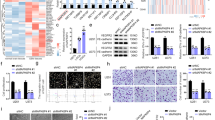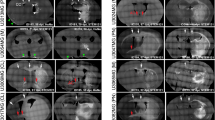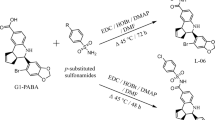Abstract
Malignant glioblastoma multiforme (GBM), with an aggressive growth pattern and unpredictable tumor location within the brain, causes a deadly disease with an extremely poor prognosis. Laminin, a typical matrix in the basement membranes of the brain vasculature and GBM-remodeled extracellular matrix (ECM), exhibits a tumor-promoting effect. Here, a poly(L–lactic acid) (PLLA) fiber substrate was modified with an IKVAV peptide derived from laminin to construct an in vitro model for investigating the effect of the ECM on GBM in white matter tracts. A heterofunctional compound composed of oligo(D–lactic acid) (ODLA) and the IKVAV peptide was synthesized and linked with a hydrophilic diethylene glycol linker (ODLA–diEG–IKVAV) to form PLLA/ODLA–diEG–IKVAV aligned fibers. The hydrophilicity and IKVAV surface density were improved by heating, enhancing human astrocytoma (U-251MG) cell adhesion. The bioactive peptide scaffold constructed in this study is a promising platform that can be used to investigate the effects of the ECM on brain tumors.
This is a preview of subscription content, access via your institution
Access options
Subscribe to this journal
Receive 12 print issues and online access
$259.00 per year
only $21.58 per issue
Buy this article
- Purchase on SpringerLink
- Instant access to full article PDF
Prices may be subject to local taxes which are calculated during checkout







Similar content being viewed by others

References
Grodecki J, Short AR, Winter JO, Rao SS, Winter JO, Otero JJ, et al. Glioma-astrocyte interactions on white matter tract-mimetic aligned electrospun nanofibers. Biotechnol Prog. 2015;31:1406–15. https://doi.org/10.1002/btpr.2123
Bellail AC, Hunter SB, Brat DJ, Tan C, Van Meir EG. Microregional extracellular matrix heterogeneity in brain modulates glioma cell invasion. Int J Biochem Cell Biol. 2004;36:1046–69. https://doi.org/10.1016/j.biocel.2004.01.013
Stuelten CH, Parent CA, Montell DJ. Cell motility in cancer invasion and metastasis: Insights from simple model organisms. Nat Rev Cancer 2018;18:296–312. https://doi.org/10.1038/nrc.2018.15
Kleinman HK, Koblinski J, Lee S, Engbring J. Role of basement membrane in tumor growth and metastasis. Surg Oncol Clin N. Am. 2001;10:329–38. https://doi.org/10.1016/s1055-3207(18)30068-1
Huang W-Y, Suye S, Fujita S. Cell trapping via migratory inhibition within density-tuned electrospun nanofibers. ACS Appl Bio Mater. 2021;4:7456–66. https://doi.org/10.1021/acsabm.1c00700
Huang W-Y, Hibino T, Suye S, Fujita S. Electrospun collagen core/poly-L-lactic acid shell nanofibers for prolonged release of hydrophilic drug. RSC Adv. 2021;11:5703–11. https://doi.org/10.1039/D0RA08353D
I Rennard, R Martin, Laminin-A Glycoprotein from Basement Membranes *, 254 (1979). https://doi.org/10.1016/S0021-9258(19)83607-4
Patarroyo M, Tryggvason K, Virtanen I. Laminin isoforms in tumor invasion, angiogenesis and metastasis. Semin Cancer Biol 2002;12:197–207. https://doi.org/10.1016/S1044-579X(02)00023-8
Terranova VP, Martin GR, Liotta LA, Russo RG. Role of laminin in the attachment and metastasis of murine tumor cells. Cancer Res. 1982;42:2265–9
Turpeenniemi-Hujanen T, Thorgeirsson UP, Rao CN, Liotta LA. Laminin increases the release of type IV collagenase from malignant cells. J Biol Chem. 1986;261:1883–9. https://doi.org/10.1016/s0021-9258(17)36025-8
Miner JH, Yurchenco PD. Laminin functions in tissue morphogenesis. Annu Rev Cell Dev Biol 2004;20:255–84. https://doi.org/10.1146/annurev.cellbio.20.010403.094555
Fujiwara H, Kikkawa Y, Sanzen N, Sekiguchi K. Purification and characterization of human laminin-8. Laminin-8 stimulates cell adhesion and migration through α3β1 and α6β1 integrins. J Biol Chem. 2001;276:17550–8. https://doi.org/10.1074/jbc.M010155200
Giese A, Rief MD, Loo MA, Berens ME. Determinants of human astrocytoma migration. Cancer Res. 1994;54:3897–904
Paulus W, Baur I, Schuppan D, Roggendorf W. Characterization of integrin receptors in normal and neoplastic human brain. Am J Pathol 1993;143:154–63
Nomizu M, Kim WH, Yamamura K, Utani A, Song SY, Otaka A, et al. Identification of cell binding sites in the laminin α1 chain carboxyl- terminal globular domain by systematic screening of synthetic peptides. J Biol Chem. 1995;270:20583–90. https://doi.org/10.1074/jbc.270.35.20583
Kikkawa Y, Hozumi K, Katagiri F, Nomizu M, Kleinman HK, Koblinski JE. Laminin-111-derived peptides and cancer. Cell Adhes Migr. 2013;7:150–9. https://doi.org/10.4161/cam.22827
Tashiro K, Sephel GC, Weeks B, Sasaki M, Martin GR, Kleinman HK, et al. A synthetic peptide containing the IKVAV sequence from the A chain of laminin mediates cell attachment, migration, and neurite outgrowth. J Biol Chem. 1989;264:16174–82. https://doi.org/10.1016/s0021-9258(18)71604-9
Sweeney TM, Kibbey MC, Zain M, Fridman R, Kleinman HK. Basement membrane and the SIKVAV laminin-derived peptide promote tumor growth and metastases. Cancer Metastasis Rev. 1991;10:245–54. https://doi.org/10.1007/BF00050795
Kanemoto T, Reich R, Royce L, Greatorex D, Adler SH, Shiraishi N, et al. Identification of an amino acid sequence from the laminin A chain that stimulates metastasis and collagenase IV production. Proc Natl Acad Sci USA. 1990;87:2279–83. https://doi.org/10.1073/pnas.87.6.2279
Patel R, Santhosh M, Dash JK, Karpoormath R, Jha A, Kwak J, et al. Ile-Lys-Val-ala-Val (IKVAV) peptide for neuronal tissue engineering. Polym Adv Technol. 2019;30:4–12. https://doi.org/10.1002/pat.4442
Bair EL, Man LC, McDaniel K, Sekiguchi K, Cress AE, Nagle RB, et al. Membrane type 1 matrix metalloprotease cleaves laminin-10 and promotes cancer cell migration. Neoplasia. 2005;7:380–9. https://doi.org/10.1593/neo.04619
Brassart-Pasco S, Brézillon S, Brassart B, Ramont L, Oudart JB, Monboisse JC. Tumor microenvironment: extracellular matrix alterations influence tumor progression. Front Oncol 2020;10:1–13. https://doi.org/10.3389/fonc.2020.00397
Kawataki T, Yamane T, Naganuma H, Rousselle P, Andurén I, Tryggvason K, et al. Laminin isoforms and their integrin receptors in glioma cell migration and invasiveness: Evidence for a role of α5-laminin(s) and α3β1 integrin. Exp Cell Res. 2007;313:3819–31. https://doi.org/10.1016/j.yexcr.2007.07.038
Hsu Y-I, Yamaoka T. Visualization and quantification of the bioactive molecules immobilized at the outmost surface of PLLA-based biomaterials. Polym Degrad Stab. 2018;156:66–74. https://doi.org/10.1016/j.polymdegradstab.2018.08.001
Kakinoki S, Uchida S, Ehashi T, Murakami A, Yamaoka T. Surface modification of Poly(L-lactic acid) nanofiber with Oligo(D-lactic acid) Bioactive-peptide conjugates for peripheral nerve regeneration. Polym. 2011;3:820–32. https://doi.org/10.3390/polym3020820
Hsu Y, Yamaoka T. Improved exposure of bioactive peptides to the outermost surface of the polylactic acid nanofiber scaffold. J Biomed Mater Res Part B Appl Biomater. 2020;108:1274–80. https://doi.org/10.1002/jbm.b.34475
Pan P, Bao J, Han L, Xie Q, Shan G, Bao Y. Stereocomplexation of high-molecular-weight enantiomeric poly(lactic acid)s enhanced by miscible polymer blending with hydrogen bond interactions. Polymer. 2016;98:80–87. https://doi.org/10.1016/j.polymer.2016.06.014
Zhang P, Tian R, Na B, Lv R, Liu Q. Intermolecular ordering as the precursor for stereocomplex formation in the electrospun polylactide fibers. Polymer. 2015;60:221–7. https://doi.org/10.1016/j.polymer.2015.01.049
Lohmeijer BGG, Pratt RC, Leibfarth F, Logan JW, Long DA, Dove AP, et al. Guanidine and amidine organocatalysts for ring-opening polymerization of cyclic esters. Macromolecules. 2006;39:8574–83. https://doi.org/10.1021/ma0619381
Nomura S, Kawai H, Kimura I, Kagiyama M. General description of orientation factors in terms of expansion of orientation distribution function in a series of spherical harmonics. J Polym Sci Part A-2 Polym Phys. 1970;8:383–400. https://doi.org/10.1002/pol.1970.160080305
S Fujita, H Shimizu, S Suye, Control of differentiation of human mesenchymal stem cells by altering the geometry of nanofibers. J. Nanotechnol., 2012, 429890. https://doi.org/10.1155/2012/429890
Kleihues P, Burger PC, Scheithauer BW. The new WHO classification of brain tumours. Brain Pathol. 1993;3:255–68. https://doi.org/10.1111/j.1750-3639.1993.tb00752.x
Acknowledgements
This work was supported by JSPS KAKENHI (grant number 16H03186).
Author information
Authors and Affiliations
Contributions
HW-Y: Writing—original draft, conceptualization, methodology, investigation, visualization, and validation. AO: Conceptualization, methodology, investigation, project administration, validation, writing—review, and editing. SF: Methodology, investigation, validation, writing—review, and editing. TY: Conceptualization, methodology, resources, supervision, writing—review, and editing.
Corresponding author
Ethics declarations
Conflict of interest
The authors declare no competing interests.
Additional information
Publisher’s note Springer Nature remains neutral with regard to jurisdictional claims in published maps and institutional affiliations.
Supplementary information
Rights and permissions
Springer Nature or its licensor (e.g. a society or other partner) holds exclusive rights to this article under a publishing agreement with the author(s) or other rightsholder(s); author self-archiving of the accepted manuscript version of this article is solely governed by the terms of such publishing agreement and applicable law.
About this article
Cite this article
Huang, WY., Otaka, A., Fujita, S. et al. Bioactive peptide-bearing polylactic acid fibers as a model of the brain tumor-stimulating microenvironment. Polym J 55, 273–281 (2023). https://doi.org/10.1038/s41428-022-00743-8
Received:
Revised:
Accepted:
Published:
Issue date:
DOI: https://doi.org/10.1038/s41428-022-00743-8


